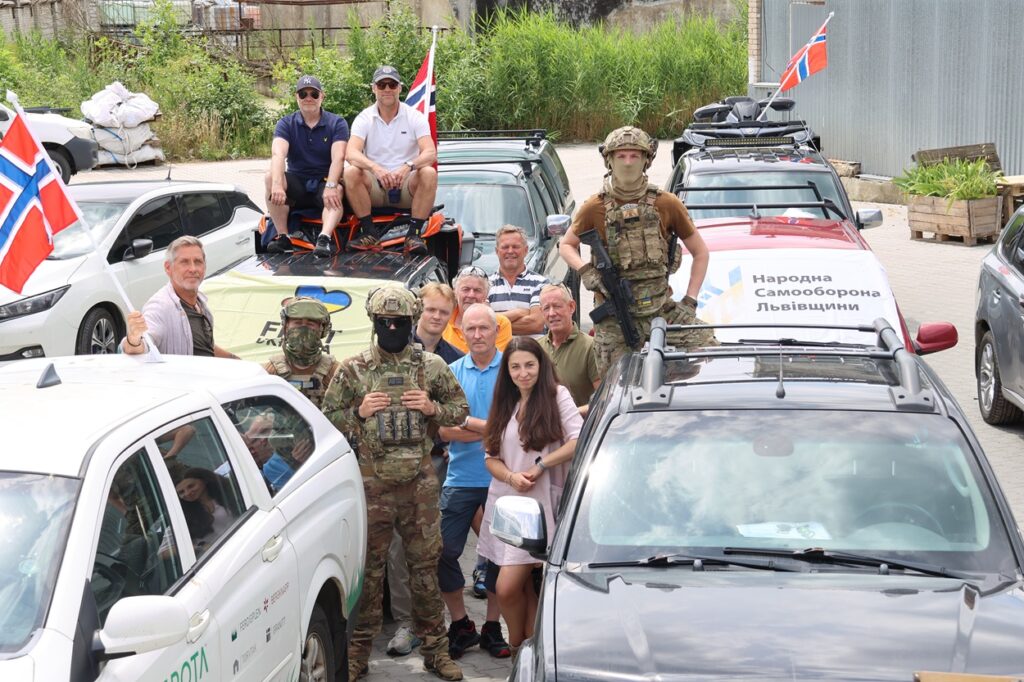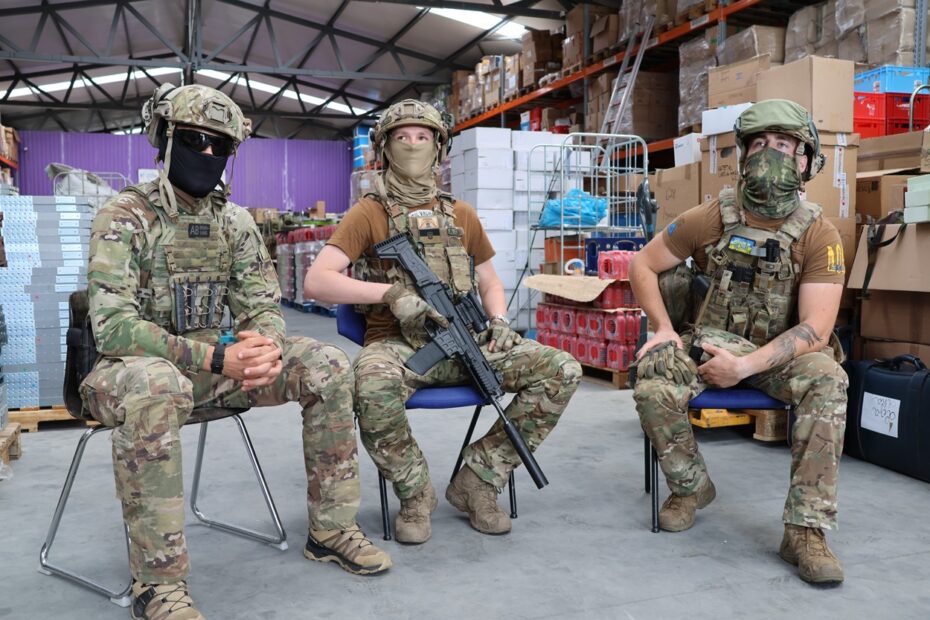Ukraine’s Military Intelligence Service – HUR, Uses Drones and Advanced Technology in the Fight Against Russia
“Lev” and his soldiers greatly appreciate the technical support they receive from organizations like Fritt Ukraina.
Lev, or “The Lion,” is the nickname for the squadron leader of a HUR unit. We meet him with two of his soldiers to deliver vehicles and equipment. “Lev,” “Mavic,” and “Boz” are nicknames they didn’t choose but were given by the soldiers in their unit.
“We highly appreciate the equipment and support we receive. Without it, we wouldn’t survive the war”, say the three soldiers.
As long as their faces are covered, we are allowed to take pictures.
War on a New Level
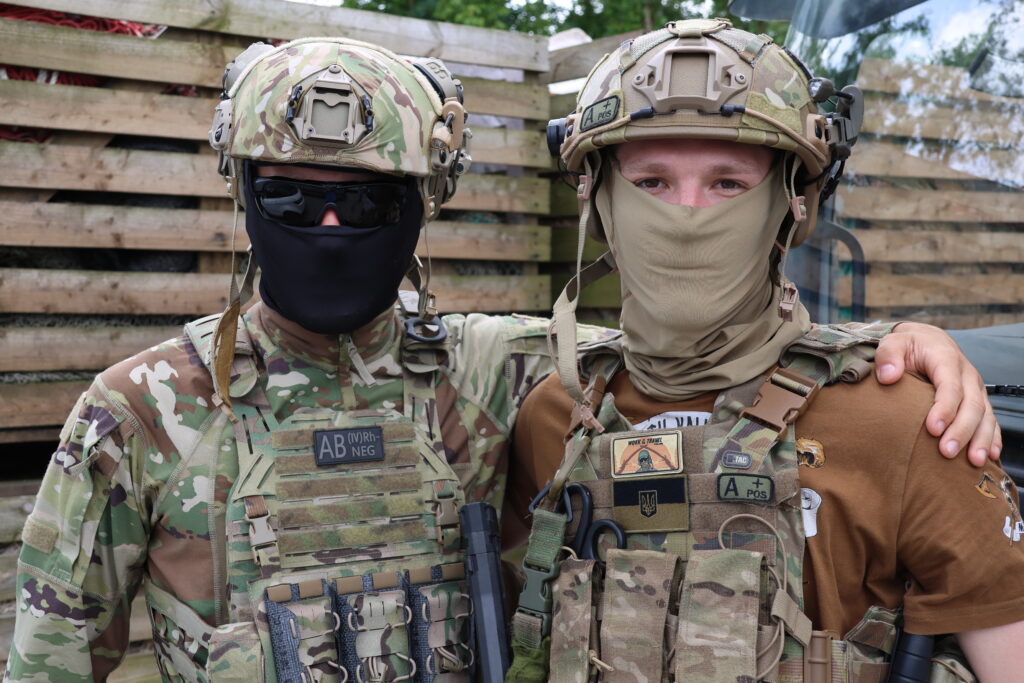
“Many people think we primarily need ammunition, boots, helmets, and bandages, but for us, the war is now on a different level”, says Lev.
He explains that Europe is beginning to understand how warfare has changed with the use of drones.
The soldiers are drone operators within the intelligence organization HUR.
“Much of our training is now done in classrooms, using computers and software where camera pixels from target images are processed and enhanced with artificial intelligence”, he explains.
The current need is primarily for technical equipment like laptops that can process drone videos quickly. The soldiers have requested a powerful laptop, to be used for both modeling 3D-printed equipment and decoding and processing videos from drones.
The drones they now use provide high-resolution images, which also require a lot of computing power.
“We appreciate that Fritt Ukraina can help us with this as well. We don’t need ten laptops, just one or two powerful enough. It’s better to receive exactly what we need than a large quantity of equipment”,” Lev explains.
Vehicles are always in high demand, as the units must constantly move quickly over long distances.
“We also appreciate that the two vehicles we are getting now have low mileage. When we move between different operational areas, it’s important the cars don’t break down. Older cars are also useful, but we use them at the front line where the distances are shorter”, they explain.
“The support from partners and donors who listen to and understand our needs is incredibly valuable”, says Lev.
Thanks to the previous car from Fritt Ukraina, they were able to make it from the front to meet us. They had been in combat that same morning and returned to the front immediately afterward.
Versatile Drones with Increasing Range
This HUR unit specializes in air drones but also operates drones in water and on land. They use drones for both surveillance and offensive strikes, as well as for laying and clearing mines. The drone’s use varies depending on the mission.
“An active group in the unit can use up to 30–40 drones a day. We currently operate with a range of around 5 km per group, and we have several groups working in different areas simultaneously, allowing us to cover large areas”, says Lev.
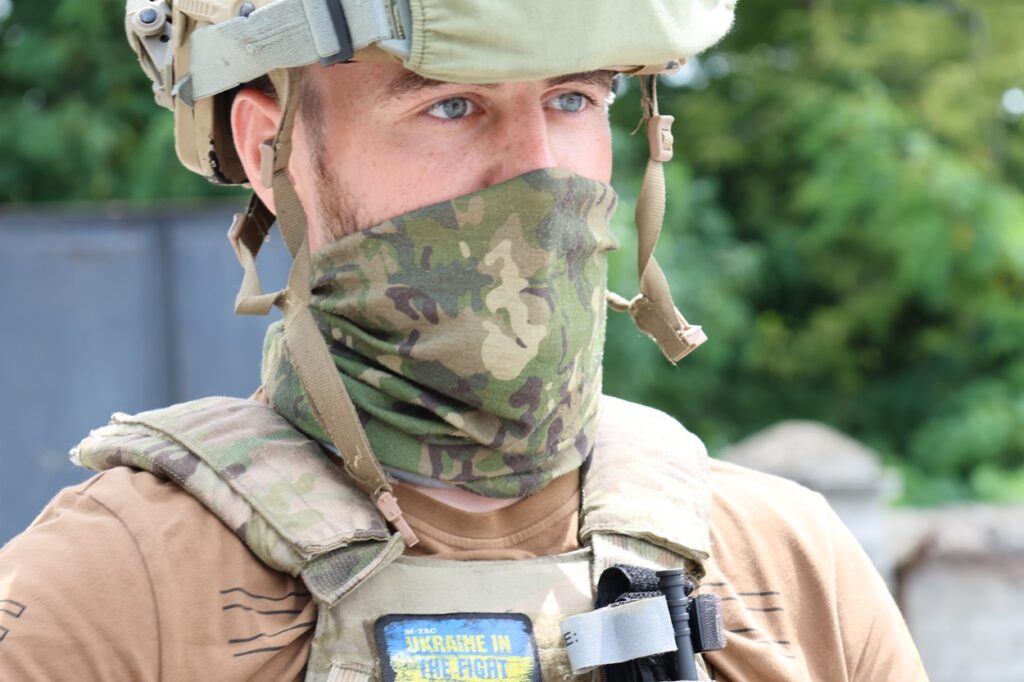
Depending on the weather and season, the drones can be used in various ways.
“In heavy snowfall, it’s difficult to fly drones and find targets. Then we can use ground drones. In poor visibility, we use drones for laying and clearing mines”, he explains.
The same applies to changes in the landscape and seasons. In spring, there are leaves on the trees, making it easier to hide and move under cover.
“In good conditions, we can now fly reconnaissance drones up to 50 km beyond the front line to gain an overview of the Russians and locate new targets. That’s why camouflage is important, not just at the front but also far behind the lines. Even far behind the front, the Russians are now painting planes and drones on the ground to try to deceive us. But planes painted on the ground don’t cast shadows, so we can distinguish between real and fake targets”, says Lev.
The unit also uses kamikaze drones to strike targets at increasingly long distances.
“These are much more expensive, and the number is therefore lower. It’s also much harder to identify the target and confirm that it’s definitely a military one, so we use these drones less frequently”, he explains.
Following the Rules of War
“Using drones is the safest option for civilians in the areas where we operate. Drones are much more precise than artillery. We first use reconnaissance drones to find targets and locate any civilians in the area. Then the attack drones can strike the target. With attack drones, we can distinguish between military targets and civilians. This helps reduce the risk to civilians, which is critical since civilians live in the areas where we operate”, Lev explains.
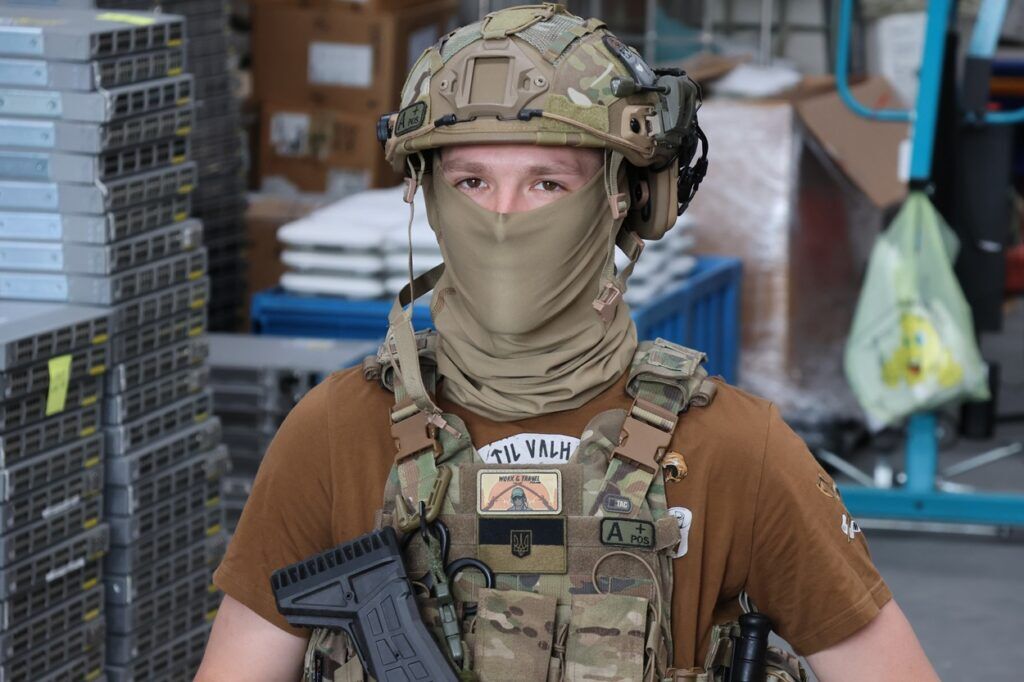
There are numerous reports of violations of international war laws by Russian forces in Ukraine.
“We receive support from Europe, and we must follow the rules of war. It might be tempting to break the Rules of Engagement, but if we did, we wouldn’t be any better than the Russians, says Lev. We only strike military targets and make sure the target is confirmed as military before attacking. This means we can’t target civilian infrastructure, only those classified as legitimate military targets”, he says.
Vulnerable Power Supply
“When the Russians attack the civilian power grid, they target both power stations and the transmission network. Ukraine needs more air defense systems to protect the grid”, says Lev.
Winter is coming, and the cold weather will be very challenging for the civilian population if the power is out.
“In the military, we are used to tough conditions, but we also need to protect our families back home. We’re trying to secure more small generators to ensure power for at least part of the time when the electricity is out”, Lev says.
The availability of electricity is crucial for both the civilian population in cities, where regular power outages occur, and the soldiers at the front, who need it to win the war.
“We have two approaches to this, says Lev. One is to supplement the power supply with generators. The other is to strengthen air defense to protect the power grid and electricity production. It’s cheaper to buy a Patriot battery than to rebuild a power plant. We look forward to more and better air defense systems, not just Patriot missiles but other types as well,” he says.
Power Banks Save Lives
The soldiers greatly appreciate the power banks from Fritt Ukraina.
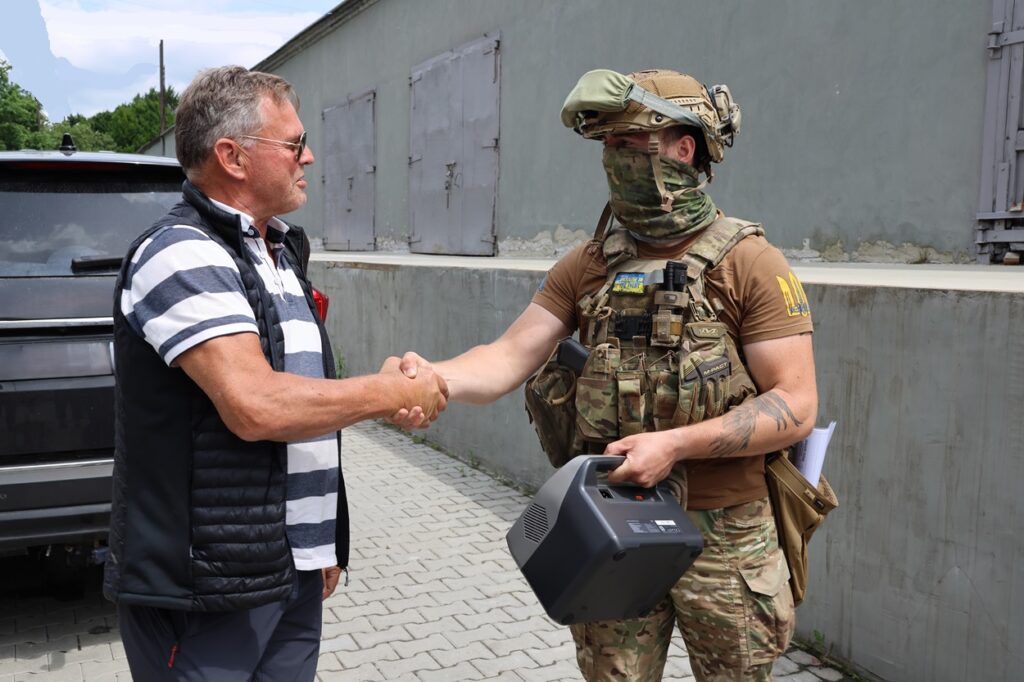
At the front, soldiers need power to operate drones and electronics, but using generators can be risky. They make noise and generate heat, which the Russians can detect. That’s why battery-powered supplies are better and safer.
“Drones, artillery, and air bombs are major threats to us. Russian glide bombs, in particular, are hard to defend against”, they explain.
Fritt Ukraina has provided several powerful EcoFlow portable power stations, which deliver enough electricity to power equipment even in the field.
“These are extremely useful”, says Lev.” They help us operate and charge drones and equipment. They don’t make noise or generate heat like generators do. We also need generators, but powerful power banks are better at the front where we need to stay quiet. They’re also easier to transport when we move. The power supplies from Fritt Ukraina save our lives by keeping us hidden from Russian drones”, he explains.
“To Valhalla”
The soldier “Boz” wears a T-shirt with the Norwegian text “Til Valhall” (To Valhalla). We’re not sure about the backstory of the T-shirt, but they explain that some soldiers in their unit have trained outside Ukraine, including with instructors from Norway.
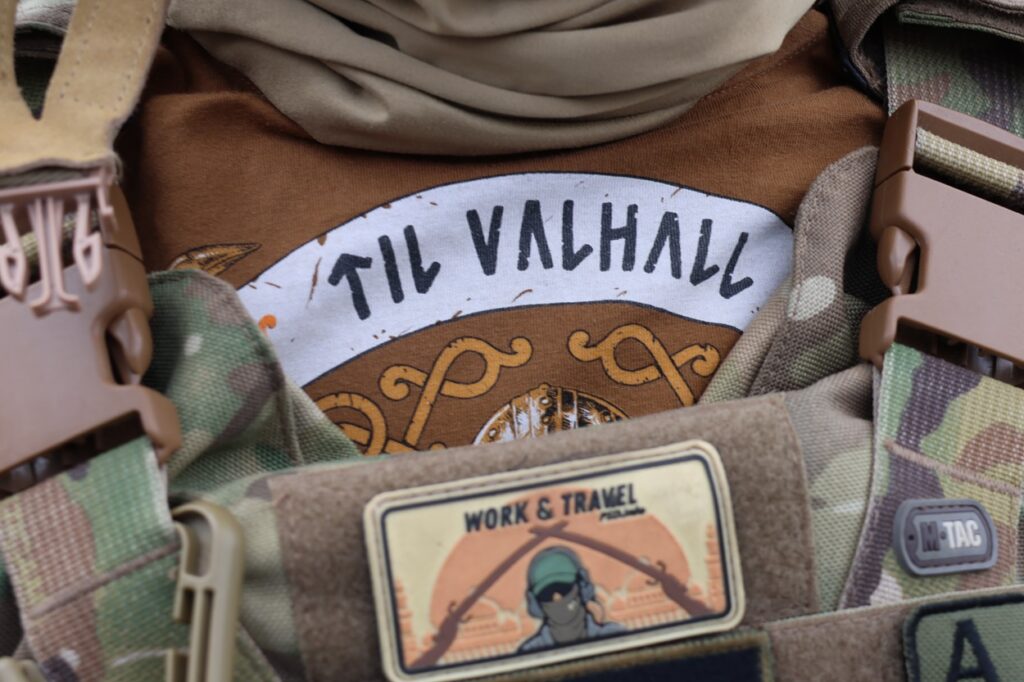
Many Ukrainian soldiers have been trained by Norwegian Home Guard soldiers, both in Norway and the UK.
The number of Ukrainian soldiers training in Europe is increasing, but we are now approaching a situation where Ukraine is giving back with valuable experience. Ukrainian soldiers have gained combat experience and strategic and tactical skills that will be valuable to NATO and military units across Europe.
“In Europe, they’re good at theory, but in Ukraine, we have the practical experience,” say the soldiers.
Lost Several Soldiers
In addition to equipment and vehicles from Fritt Ukraina, moral support is also crucial. Many soldiers coming from the front face tough physical and psychological challenges, which they bring home with them. It helps them to know they have support.
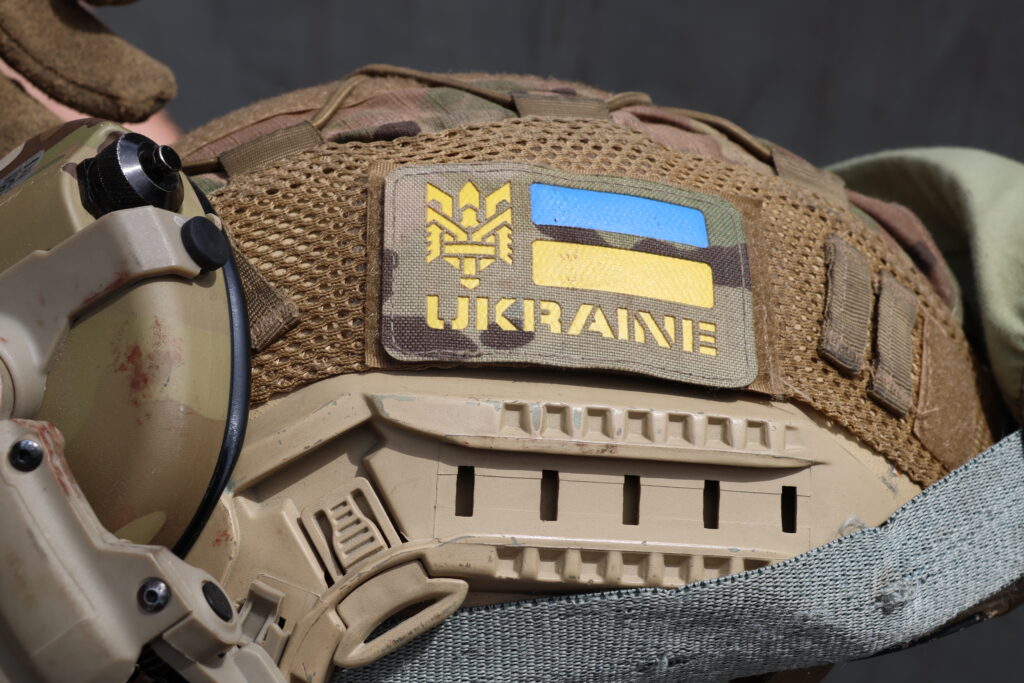
“Our unit has also suffered losses, and we have lost several soldiers in battle”, the soldiers say.
They fall silent when we ask how many.
We ask what motivates them to keep fighting.
“It’s simple; I have a wife and several children, one soldier replies. We have no other option but to win.”
3D Printing Drone Parts
After a request, the soldiers received several 3D printers from Fritt Ukraina.
“With these, we can print the parts we need for our drones. The only limit is our imagination with such good 3D printers. They are extremely useful to us”, they say.
The unit also maintains close, ongoing contact with the manufacturers of the equipment they use and test at the front. This allows them to continuously improve the equipment. When they use drones and other gear, they can give feedback and suggestions for improvements to the manufacturers.
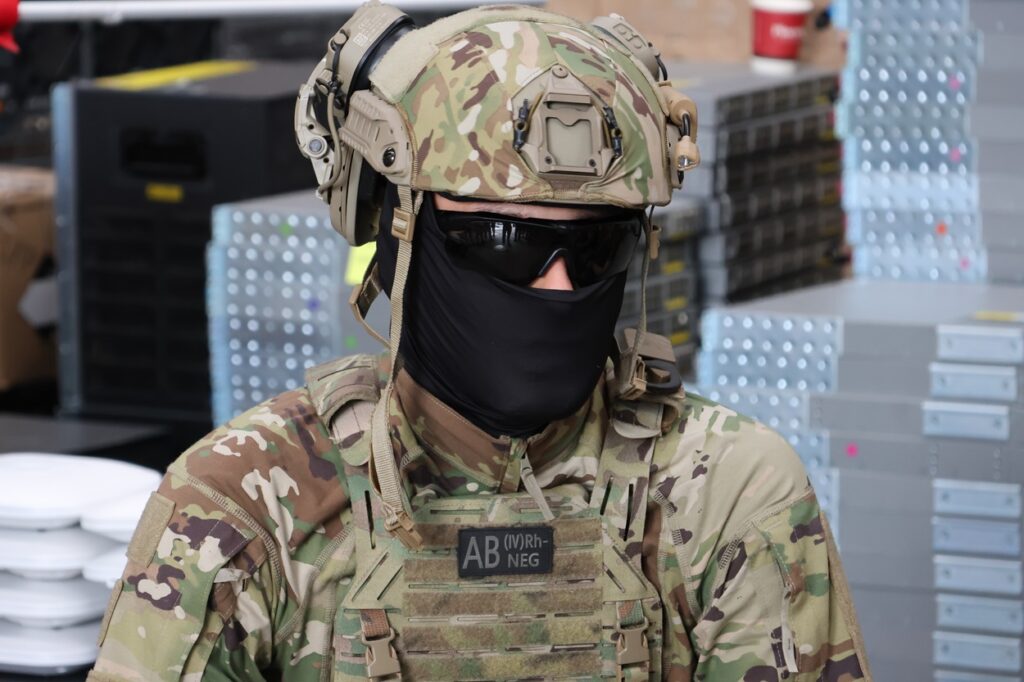
“Sometimes, we get feedback from the manufacturers that the issue has already been fixed,” they explain.
This exchange takes place not only with manufacturers in Ukraine but also with suppliers and manufacturers from abroad.
“We gladly share information so that our experiences can benefit other countries. We don’t know who will benefit from the experiences we are gaining now”, says Lev.
In addition to air and ground drones, the unit has used drones in and on the water.
“We’ve used underwater drones to search for mines in rivers, but right now, we’re mostly operating in inland areas without water”, Lev explains.
Close Cooperation with Suppliers
The soldiers use both newly developed European equipment and equipment produced several years ago, which has not previously been used or tested in real combat and war scenarios.
“Even some older equipment continuously needs adjustment and upgrades”, the soldiers explain.
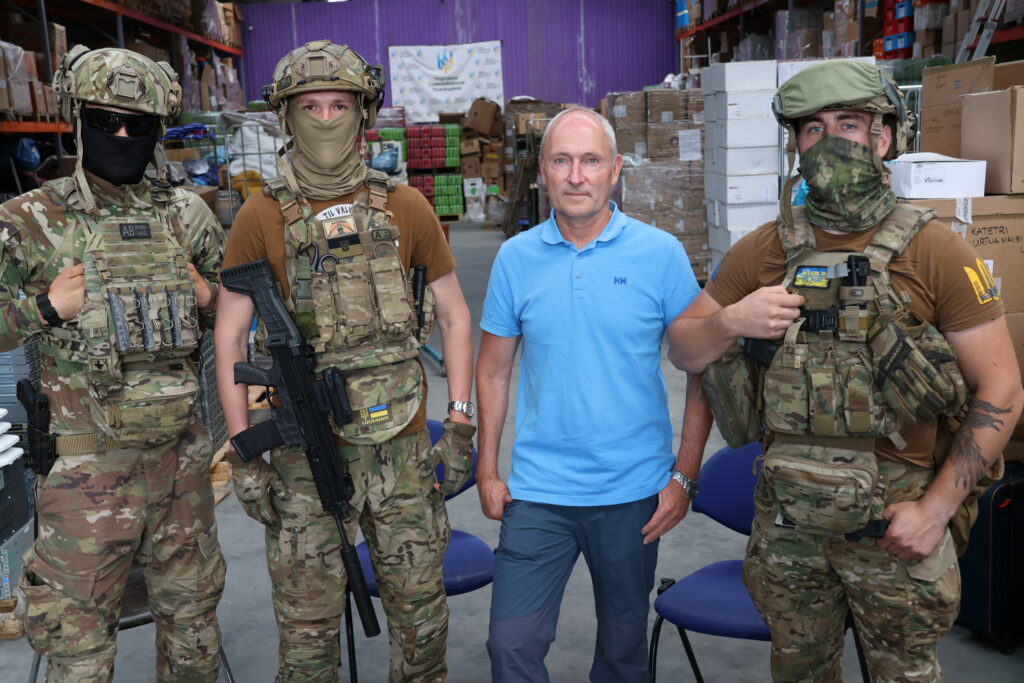
Lars Bugge Aarset with Ukrainian special forces. Photo: Fritt Ukraina
The author with “Boz,” “Mavic,” and “Lev” from HUR. Photo: Fritt Ukraina
Right now, in Ukraine, the development and improvement of military equipment are happening. Even some equipment that has been considered top quality has proven inadequate in war.
“It’s not enough for a product to be good in theory if it doesn’t work in practice. We are very open to cooperating and testing military equipment from other countries in Europe”, says Lev.
During the last transport, the soldiers received personal first aid kits. The contents of these were developed in cooperation between Norway and Ukraine.
“For us, it’s important to share information. This ensures that the support we receive keeps getting better and better. So this is definitely a win-win situation”, he says.
He also thanks them for the digital diagnostic tool for vehicles.
“It’s a useful tool that simplifies the maintenance we can do ourselves and increases both the operational reliability and lifespan of the vehicles”, says Lev.
The soldiers are determined to continue the fight to protect their country and their families.
“We are here, we will stay here, and we will keep working to defend our country. It’s our duty and responsibility”, they conclude.
We met the soldiers as part of Fritt Ukraina’s 31st transport. It consisted of ten cars, three ATVs, drones, PCs, power banks, and camouflage nets.
